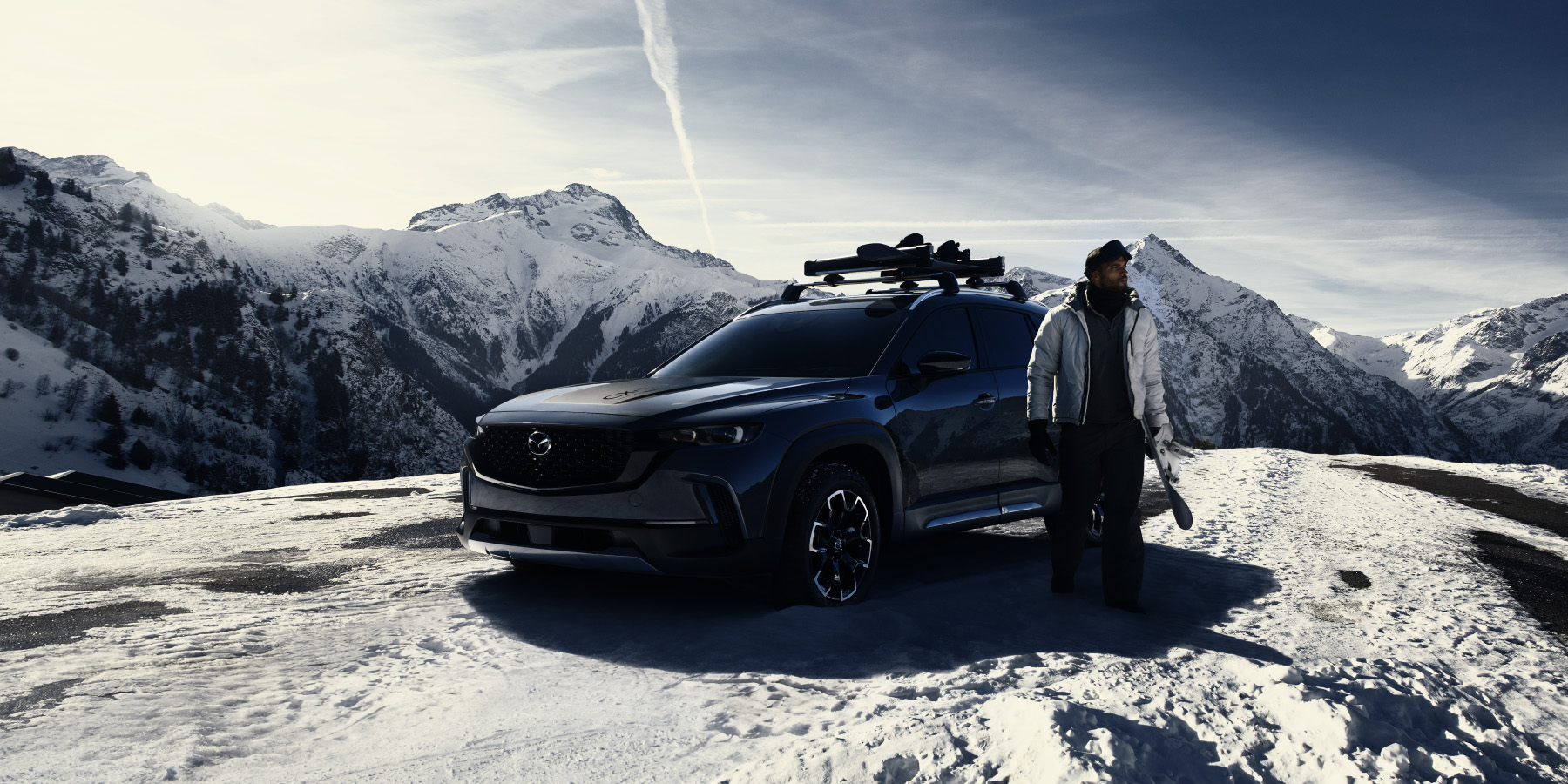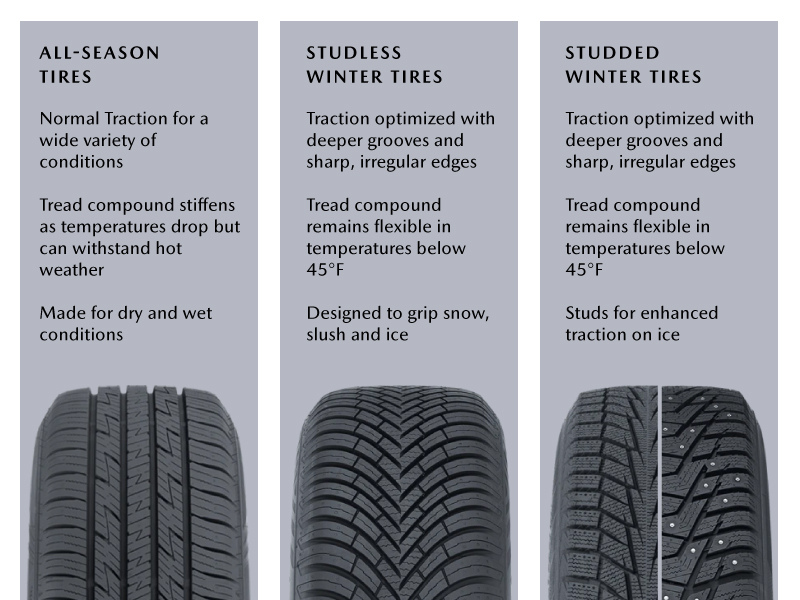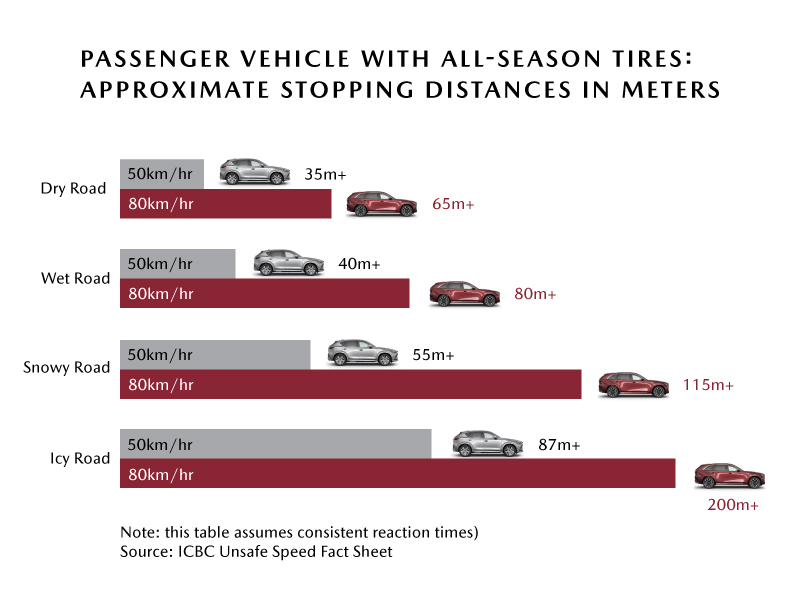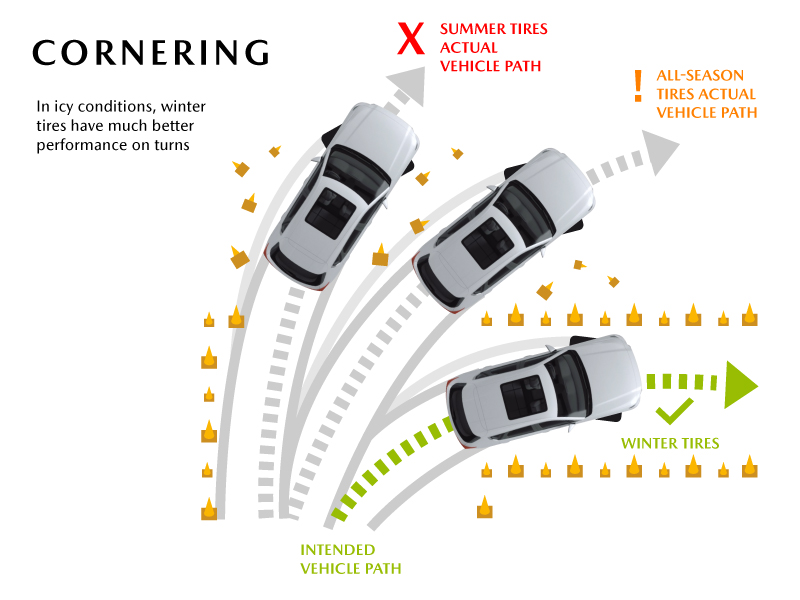Are Snow Tires Worth It?

When winter weather approaches, many drivers face a crucial decision: invest in snow tires, or not? Snow tires, also known as winter tires, are specially designed to perform in snowy, icy, and slippery conditions. If you live in an area prone to snowfall and ice, snow tires are the go-to choice — along with an alert driver, of course — for a safer winter on the road. This is so much the case that switching to snow tires in the winter is required in some countries.
But what exactly sets snow tires apart from other tires? What if it snows only sometimes where you live — are snow tires worth it? Or will all weather tires suffice? And do you have to take snow tires off in the summer?
Let’s break down some frequently asked questions to highlight why snow tires may be worth the investment.
Do snow tires make a difference?
Tire composition
Regular tires tend to harden in colder temperatures, leading to reduced traction and compromised handling on snow and ice. Snow tires are engineered with a unique rubber compound that is hydrophilic (attracted to water) and remains pliable even in freezing temperatures and provides better grip and control in winter conditions.
Tire tread
The tread pattern on snow tires is also distinct from summer and all-season tires. It features deeper grooves and many sipes (small slits) that channel snow and slush away from the tire's surface, preventing hydroplaning and enhancing traction. Like summer tires, many winter tires are directional, meaning it needs to be mounted in the correct direction to work properly.

The U.S. Tire Manufacturers Association requires that snow tire treads for passenger cars and light trucks should have at least a 1/16-inch cross-sectional width and grooves that angle between 35 to 90 degrees from the wheel’s rotational direction to help “bite into” snow and ice for improved grip.
Benefits of snow tires
The structural nuances unique to snow tires make all the difference in how a vehicle performs in slick, icy conditions — here’s how:
1. Improved Braking
One of the most crucial safety benefits of snow tires is their ability to improve braking performance on snow- and ice-covered roads. Snow tires have stopping distances up to 50% shorter on icy surfaces compared to those with all-season tires. This reduction in braking distance can mean the difference between avoiding a collision and being involved in a dangerous accident.

2. Improved Traction
Snow tires provide better traction on snow-covered roads, which is essential for preventing your vehicle from slipping and sliding. See what Consumer Reports says about the stopping distances of snow tires compared with that of all-season tires in this study.
Deeper treads and softer rubber compounds of snow tires grip the road better than all-season tires in cold conditions, making it easier to start, stop, and maneuver your vehicle safely.
3. Improved Cornering
A comparative test run on an ice rink found that on a 90-degree turn, snow tires did not lose traction, whereas all-season tires did.
Snow tires' combination of deep tread patterns and specific rubber compounds enhances the tire's ability to grip the road during turns, providing better stability and control. This improved cornering capability helps prevent skidding for safer maneuverability on snow-covered bends.

4. Improve Acceleration
That same study found that it took studless winter tires less time (4.5 seconds) to cover a distance of 60 feet from a dead stop compared to all-season tires (6.5 seconds) and summer tires (7.4 seconds). The winter tires relied less on the vehicle’s traction control and more on its tires’ grip on the ice for acceleration, allowing them to get moving and cover ground more quickly and efficiently.
Winter tire FAQs
-
While all-season tires are designed to handle some weather conditions, they are not optimized for extreme winter climates or regular use in snow, on ice, or during long stretches of cold (below 45º F) weather. They tend to compromise performance to be adequate in both hot and cold temperatures.
Snow tires are specifically engineered for winter driving, offering superior traction and braking capabilities in snow and ice. If you live in an area that frequently sees snowfall or ice on its roads, investing in snow tires can greatly improve your driving safety and experience during the winter months.
-
All-season tires do provide some traction in the snow, but are not meant for regular use in snowy, icy, or cold (below 45º F) weather. If you live in an area that regularly meets any of these conditions, it's worth it from a safety standpoint to switch to winter tires. If the weather conditions where you live are borderline and you’re hesitant to invest in a dedicated set of winter tires, some (not all) of the latest “all-weather” tires approach winter-tire performance but can be used year-round.
-
The lifespan of snow tires can vary depending on factors such as driving habits, road conditions, weather conditions, and tire quality. They do tend to wear more quickly than all-season tires. A good marker to gauge the efficacy of your snow tires is to examine their tread depth, as anything under 5/32 of an inch can affect their traction. To do this, some experts suggest using a quarter— simply insert it into a groove with George Washington’s head down, and if his head is just visible, you’ll need to start shopping. To keep your winter tires in the best shape possible, use them only during winter and switch to all-season or summer tires when temperatures rise above freezing.
-
The answer to this question depends on the weather conditions of where you live, and if authorities allow them. If your roads are regularly icy (with or without snow), studded tires are likely the better choice. These conditions are particularly common if you live by the Great Lakes or New England coastlines. Non-studded winter tires are fine for snowy roads.
-
It is not recommended to drive on snow tires during the summer months. The rubber compound used in snow tires is designed for cold temperatures and will wear out much faster in warmer conditions. The softer rubber of snow tires can also lead to reduced handling and stability in hot weather, posing safety risks.
-
The cost of snow tires can vary based on factors such as tire size, brand, and vehicle type. On average, snow tire prices cover a similar range to all-season tires, although you may be able to find more cost-effective alternatives at a local or discount tire shop. While any new set of tires is an investment, it's essential to remember that these are worth the extra safety for which they are designed.
What other vehicle features are important when it comes to driving in the snow?
All-Wheel Drive (AWD) or 4-Wheel Drive (4WD)
AWD and 4WD can enhance acceleration, traction, and stability on slippery surfaces. AWD, or 4WD running in Auto mode, automatically adjusts torque distribution to all four wheels, ensuring the best acceleration in snowy conditions.
4WD, often found in traditional SUVs and trucks, evenly distributes power to both front and rear wheels, allowing for better traction when navigating through deep snow or off-road terrains. These systems significantly reduce the risk of wheel slippage under power.
Ground clearance
SUVs and trucks typically have higher ground clearance than minivans and sedans (although this difference can sometimes be nominal, depending on which models you compare). Still, this extra clearance allows them to navigate through deeper snow without getting stuck or damaging the undercarriage of the vehicle.
Driving-centric tech and safety features
Even if you’re an extremely cautious and experienced driver, heavy snow conditions can greatly impact your visibility and maneuverability on the road. Car safety features like adaptive headlights, anti-lock brakes (ABS), blind-spot monitoring, and forward collision warning can further enhance your vehicle's performance and safety on snowy and icy roads:
● Adaptive headlights: These headlights adjust their angle based on the vehicle's steering input and speed, providing improved visibility around curves and corners.
● Anti-lock brakes (ABS): An anti-lock brake system prevents the wheels from locking up when you slam down on the brake pedal, enabling the driver to maintain steering control in emergency braking situations.
● Blind Spot Monitoring: This feature acts as an extra pair of eyes, using sensors to detect vehicles in the driver's blind spots and alerting drivers through visual, audible, or sensory warnings to avoid potential collisions and dangerous lane changes.
● Forward Collision Warning: It is easier to misjudge braking distances in snowy and icy conditions, when your vehicle has reduced traction. Forward collision warning uses sensors to monitor the distance between the vehicle and objects ahead, warning the driver if a collision is imminent to give them more time to react and slow down.
Please note many of the above systems depend on sensors, which should be kept as clean as possible in order to see optimal performance. Snowy conditions can mean that snow builds up on the sensors and limits their efficacy. Check your Owner’s Manual to learn where ice, snow, or mud may build up and may need to be cleaned away.
Snow-worthy vehicles at Mazda
If you regularly drive in areas with heavy snowfall or ice during the winter season, snow tires are a worthy investment. But your vehicle can also play a significant role in keeping you safer, no matter the season.
The Mazda selection of crossover SUVs with standard AWD are primed for your next outing, whether it is an expedition to a remote winter resort or a drive through the snow to your local grocery store. Featuring mindfully crafted storage space options to suit nearly every need, intuitive drive modes, and the Mazda i-ACTIV AWD® system, these vehicles offer comfort, performance, and adaptability in each adventurous package. And if you prefer something other than a crossover SUV, the Mazda 3 Sedan and Mazda 3 Hatchback are available with i-ACTIV AWD®.
To find the perfect vehicle for your next adventure, compare our selection of vehicles online or test-drive one today when you visit a local Mazda Dealer near you.
This article is intended for general informational purposes only and is based on the latest competitive information available at the time of posting. Information herein is subject to change without notice and without Mazda incurring any obligations. Please review a variety of resources prior to making a purchasing decision. Visit Resource Center for more articles.




















